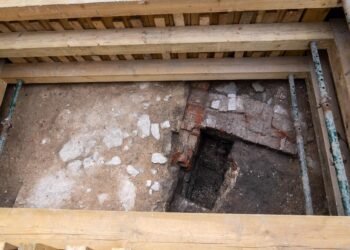Archaeologists have unearthed what may be the oldest known tattooing tools linked to the ancient Maya civilization. Found at Actun Uayazba Kab—Handprint Cave—in central Belize, the two stone artifacts seem to have been used for puncture-style tattooing, a method common to many Indigenous cultures before the advent of modern tattoo machines.

The tools, classified as burin spalls, are tiny flakes of chert—a kind of fine-grained stone—that have been shaped into a sharp point and bear traces of what is believed to be soot-based ink. These tools, which date back to the Classic Maya period (CE 250–900), were found by researchers from universities in the United States and Denmark in a ceremonial context within the cave, an environment the Maya linked with sacred concepts such as life, death, and the underworld.
Although the Maya were long recognized to have tattooed—one account by Spanish conquistadors reported men and women being adorned with elaborate designs symbolizing bravery, beauty, or punishment—the actual tools employed by the Maya had never been found. The traditional artwork frequently shows persons adorned with intricate geometric body designs, but due to the tropical nature of the region, no evidence of tattooed skin on members of the Maya people has ever been found.
To test their hypothesis, the researchers replicated the burin spalls and used them to tattoo fresh pig skin, widely regarded as the closest biological match to human skin. The wear patterns on the experimental tools that were produced were the same as those seen on the ancient artifacts. Microscopic analysis also showed pigmented residues used in tattooing, and wear marks that had been made due to repeated usage on soft tissues like skin and fresh hide—not hard materials like bone or wood.

The tools were found on a ledge above a travertine pool in the cave, near human remains and valuable ritual items such as jade and obsidian. This suggests that the tattooing may have been ceremonial or social, perhaps for high-ranking individuals or sacred events.
Interestingly, the researchers believe that the tools were deliberately broken in a ritual before being deposited in the cave.
In their article published in the journal Ancient Mesoamerica, the researchers propose that tattooing among the ancient Maya was not merely decorative but a complex cultural activity related to identity, status, and religious belief. “The skin served as a social canvas,” they wrote.
Though many things remain unknown about the broader use of tattoos among Maya individuals, the discovery of these tools opens up new avenues for thinking about how people in ancient times used their bodies as instruments of expression, memory, and power.
























Comments 0